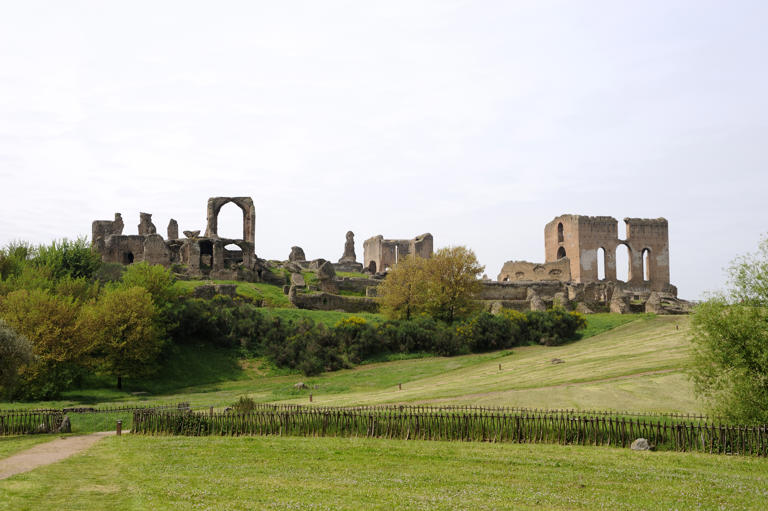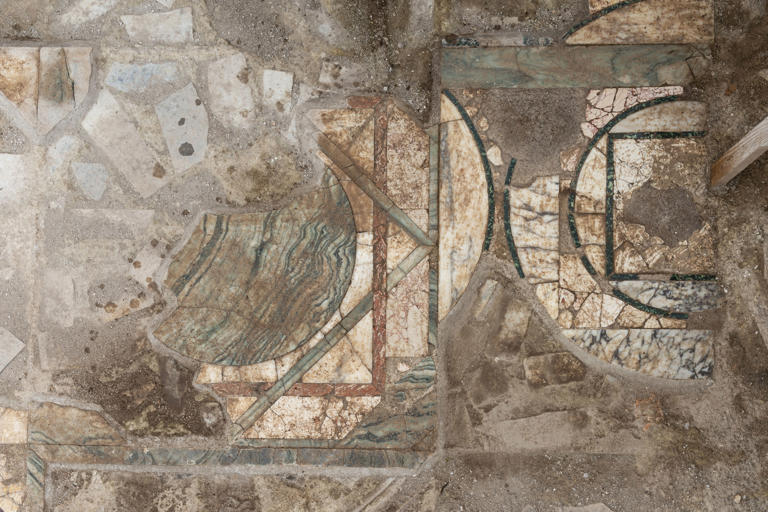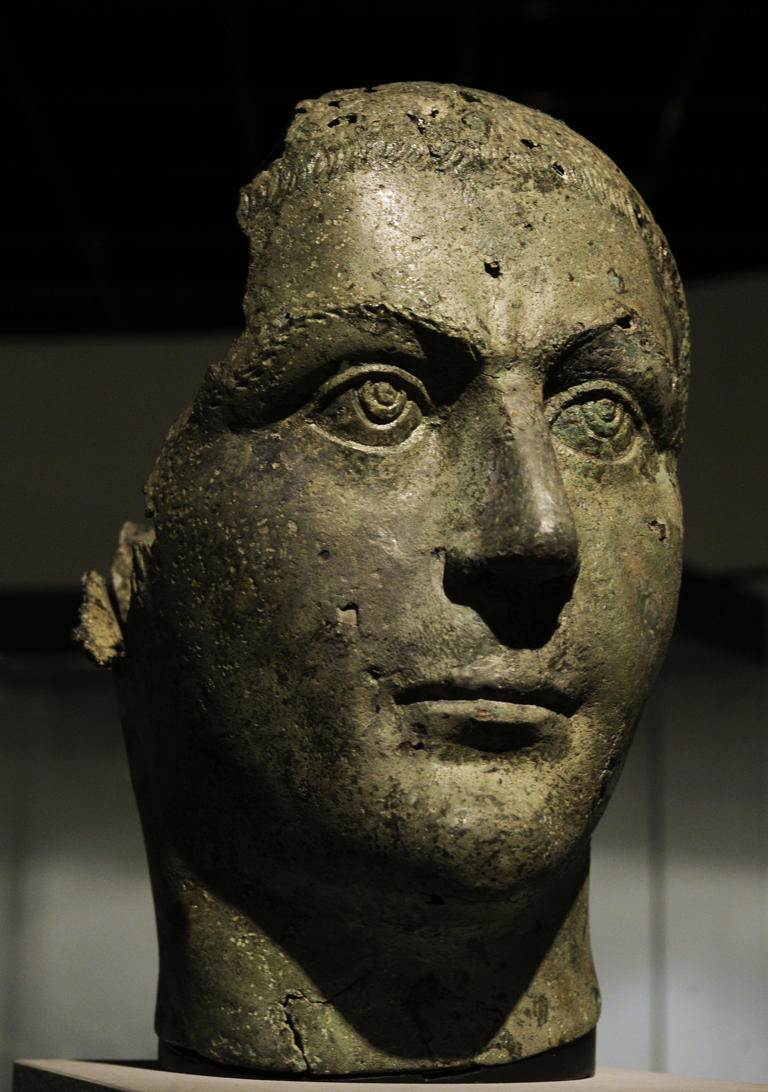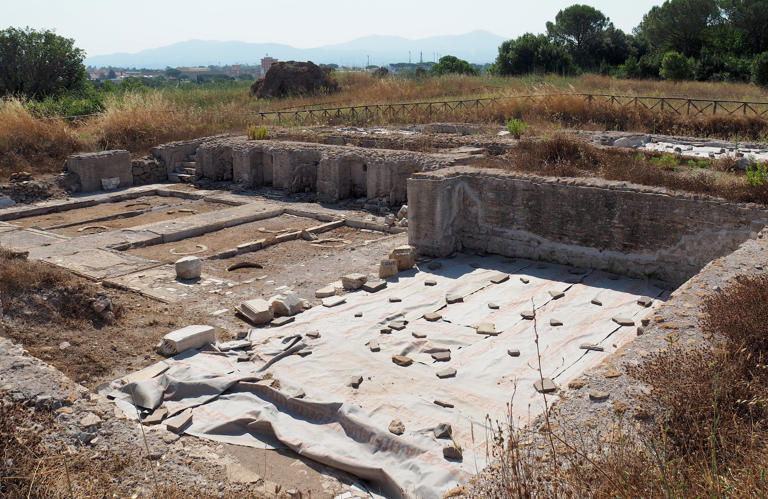Story by Charlotte Lytton • July 22, 2023

Roman ruins reveal how emperors used winemaking in a lavish power play© Paolo Gaetano/Getty Images/iStockphoto
ROME — Fights involving exotic cats, chariot races, gladiatorial battles: At the banquets of ancient Rome, there was no skimping on dinnertime entertainment. And, according to a recent study, sport for elite guests included something rarer, too: winemaking as a form of theater.
The findings, published in the journal Antiquity, describe how the Villa of the Quintilii used alcohol production for show in what is now believed to be the among the most lavish wineries in the ancient world. This makes the 2nd-century villa only the second known to have used wine in this way, said lead study author Emlyn Dodd, a lecturer in classical studies at the University of London.
The villa has “this amazing level of decoration and luxurious appointments in it that we never see in ancient wineries,” Dodd said.
The discovery highlights the use of wine as a form of power for the privileged in one of the ancient world’s bloodiest empires.
“The lives of the bad emperors are full of what had always seemed completely unrealistic” behaviors, said Nicholas Purcell, Camden Professor of Ancient History at the University of Oxford, who was not involved in the study. “And then something like [the winery at the Quintilii] turns up, and it actually turns out that it’s all true; that they really were doing this kind of thing, and building special places in order to do it.”
Winemaking as theater

This decorative inlaid marble pavement is in one of the dining rooms overlooking the winery.© S. Castellani, after Dodd et al. 2023
A pair of wealthy brothers built the Villa of the Quintilii in the 2nd century A.D. on land that sits about eight miles from Rome’s modern-day city center.
The site was so desirable that around 182 A.D., then-Emperor Commodus killed its owners to claim it for himself, kicking off a long period of imperial ownership. Many emperors used the villa over the years, with some making renovations and adding to its opulence. The name Gordianus is stamped into the lead pipes at the facility, which suggests that Emperor Gordian III, who ruled from 238 to 244 A.D., built the winery or at least renovated it.
Formal excavations of the villa ruins have been going on since the late 18th century, but the first evidence of the winery did not emerge until 2017. Archaeologists were originally looking for the entrance to the roughly 60-acre site when they found an “unexpected surprise,” said Dodd, who wrote the paper while working at the British School at Rome.

A bronze bust of Roman Emperor Gordian III.© Universal History Archive/ Universal Images Group/Getty Images
Unlike the other winemaking facilities that would have been common in the empire, the Quintilii winery was extravagantly decorated with some of the finest materials. The floors were not waterproof concrete but were made of imported red marble. Juice from pressed grapes would have spurted from channels in a marble-lined façade, creating a purely entertaining fountain effect. And the winery is surrounded by dining rooms, once richly appointed, that seem to have nothing to do with the production process.
On the basis of these clues, archaeologists think the Quintilii served as a kind of “imperial toy,” said Alice Poletto, a Rome fellow at the British School at Rome who was not involved in the research.
The experts think enslaved people would have pounded grapes in the winery’s treading area, most likely slipping about on the luxurious red marble while doing so, to the gruesome delight of sloshed guests. Attendees from the era’s highest social circles would look on as the roughage of crushed grapes, or must, made its way down to mechanical presses, which would send juice gushing through fountains set in the courtyard wall and pouring from open channels into dolia, or ceramic storage jars, in the ground to collect the spoils.
By Poletto’s estimations, the dining complex could seat 25 to 27 guests, with the winemaking spectacle taking place perhaps twice a year as “a unique opportunity and an absolutely high honor that served not only as a reward to the invitees, but also, in my opinion, a way for the emperor to highlight [and] reinforce his power.”
Playing at agriculture

The lavish Villa of the Quintilii sprawled across almost 60 acres of land.© AP
Banquets at the Quintilii might have been organized ahead of political elections, Poletto thinks; a way to manipulate results behind the most regal of doors. For many emperors, extending invitations to such events was “a privilege and a warning,” she said, a way for them to communicate that “your life is in my own hands … be aware that if I decided that you’re going to die tomorrow, you are going to die tomorrow.”
Such was the state of play in ancient Rome, where death could be employed to expand the empire and for post-feast japes alike. Poletto says that Rome’s latter Imperial period included “banquets of the dead,” where actors would dress as demons or afterworld deities and pretend to murder guests for the grim entertainment of others.
In addition, “drinking wine was a very important symbol of status and prestige” for the ancient Romans, said Paulina Komar, an assistant professor at the Institute of Archaeology at the University of Warsaw who has written extensively on wine’s role in ancient empires.
Oxford University’s Purcell said that “the gathering of grapes and the making of wine [was] of course the centerpiece of Greek and Roman upper class,” and that he would be “quite surprised” if the more humdrum olive or grain harvests attracted similar attention.Wine grapes were first domesticated 11,000 years ago, gene study says
Still, history is replete with examples of the wealthy toying with the idea of a bucolic lifestyle for sport, Purcell added. In the late 18th century, Marie Antoinette installed a dairy at her castle in Rambouillet that has stunningly ornate décor, designed for its form rather than function. The winery at the Quintilii is a similar example of “the super-rich play[ing] with the fantasy that they might be participating in the romantic life of agricultural production,” he said.

A view from what once was the west dining room shows the winery’s cellar area leading up to the production levels.© Emlyn Dodd
It is possible that more examples of winemaking as sport will emerge from Roman ruins. The discovery at the Quintilii follows that in 2016 of a similar facility at Villa Magna, a site in central Italy dated to about 100 years earlier. These “thick and fast” findings, as Purcell describes them, offer hope about what might be unearthed next.
“It does make you wonder about other periods of the Roman Empire, perhaps even earlier in the republic,” Dodd said. “Was it a common phenomenon, or are we just seeing a handful of incredibly rare examples that particular emperors or super-elite people built?”
Purcell’s money is on Hadrian’s Villa in Tivoli, 20 miles from Rome, as the spot next likely to reveal such riches. “It wouldn’t astonish me at all,” he said, to find “sumptuous public rooms … [at] the biggest and best Roman Imperial villa that was ever built.”
And back at the Quintilii, there are more discoveries to be made. One dining area has been excavated, but two spots around the wine cellar have yet to be unearthed, as well as a number of spaces attached to the presses and production areas. Finding what lies beneath these is the next step, Dodd said, “to tease apart chronologies and purposes and see where it takes us.”
No comments:
Post a Comment